2025.01.06
「料理家minokamoから教わる江戸甘合わせ味噌の美味しい使い方。師走の味噌ランチ会」開催
Learning How to Deliciously Use Edo Low-salt Blended Miso from Chef minokamo: Shiwasu December Miso Lunch Party
12月7日にTOKYO GIFTS 62でも販売中のあぶまた味噌「江戸甘合わせ味噌」を使ったお料理ワークショップをMY Shokudo Hall & Kitchenで開催。今回は、さまざまなメディアで活躍中の料理研究家 minokamo(みのかも)さんに「江戸甘合わせ味噌」を使った《すいとん味噌ボロネーゼ》の作り方を教えていただきました。
MY Shokudo Hall & Kitchen hosted a cooking workshop using Abumata Miso’s Edo low-salt blended miso, also on sale at TOKYO GIFTS 62, on December 7. Chef minokamo, who is active in various forms of media, taught us how to make suiton flour dumpling miso Bolognese using Edo low-salt blended miso.
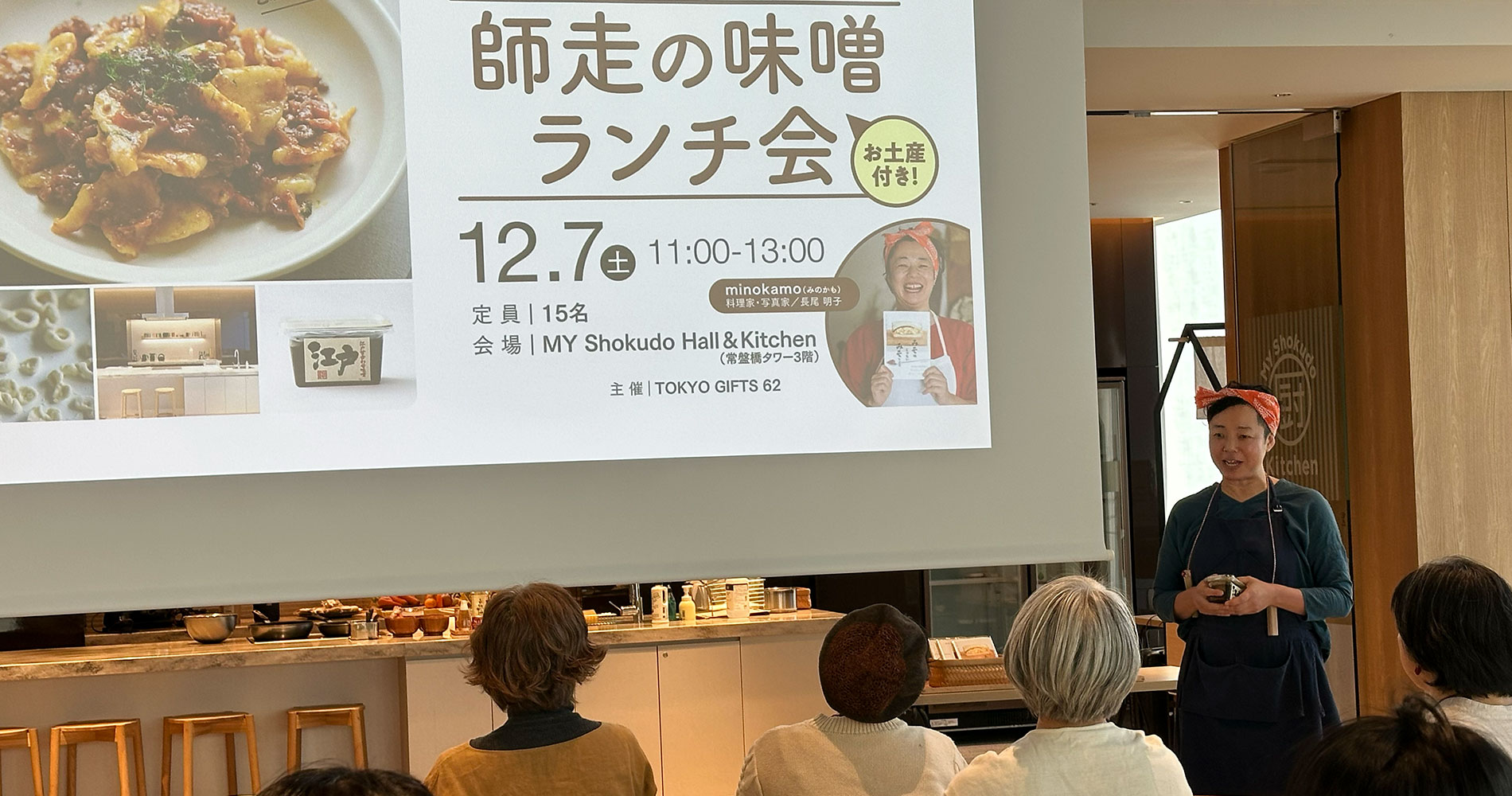
笑顔が素敵な料理家minokamoさん。
Chef minokamo has a lovely mile.
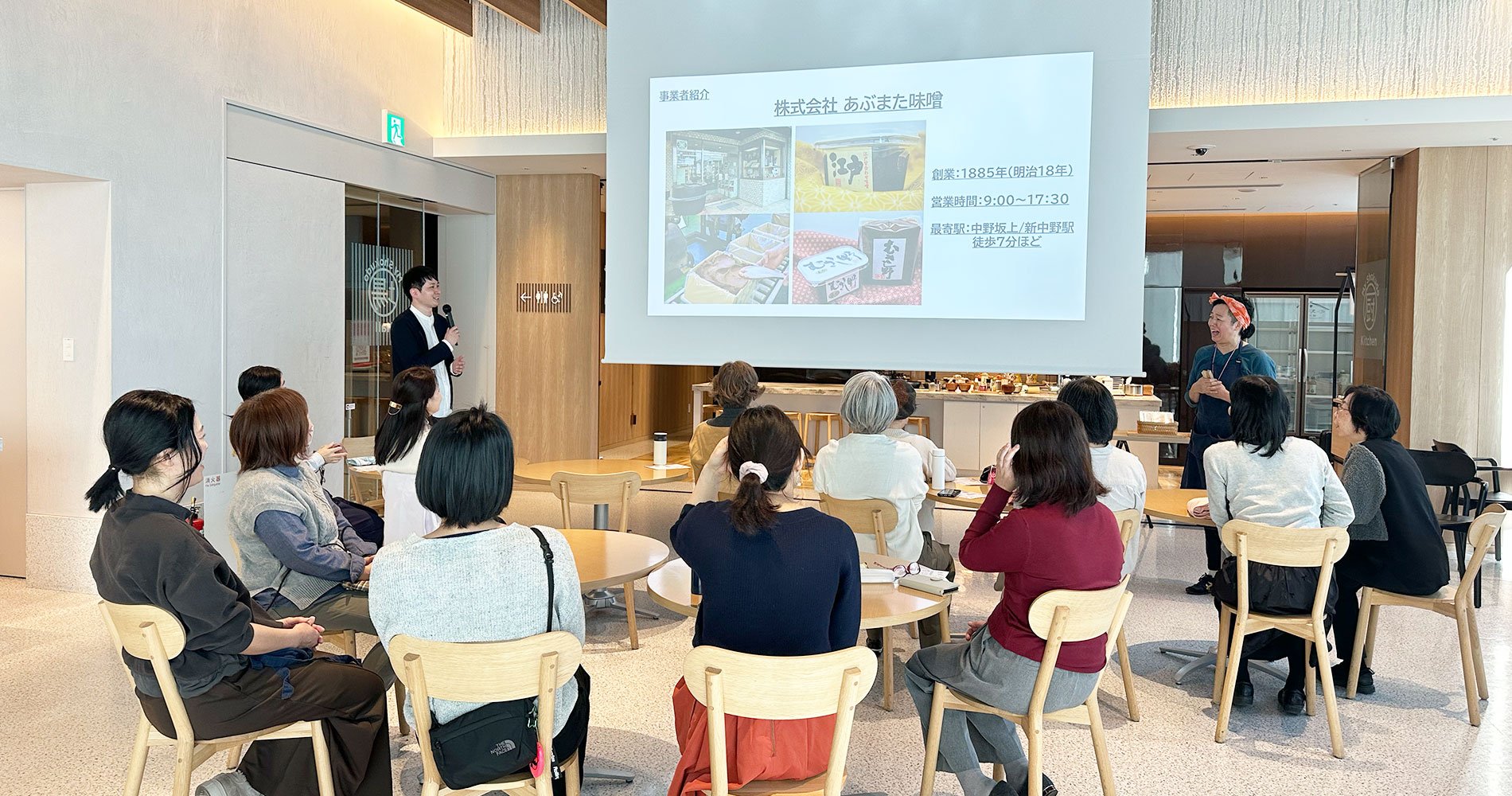
TOKYO GIFTS 62の店長から店舗の説明も。
The Manager of TOKYO GIFTS 62 also gave an explanation about the shop.
ひととおり、説明が終わった後はいよいよ調理開始です。まずは参加者みんなで、パスタがわりのすいとん作り。minokamoさんの話を聞きながら、参加者同士で話したり、和気あいあいと、楽しそうな雰囲気の中、こねていきます。今回は小麦粉と水を使ったシンプルなすいとんパスタ。自分で作るすいとんの良さは、小麦粉の種類を自分で選べるところ。たとえば、全粒粉を使ったり、国産や自分の好きな産地の小麦粉を選んだり、すいとんの固さなども水の量などで自分好みに調整可能です。
After the brief explanation was finished, it was finally time to start cooking. First, all the participants made suiton flour dumplings in place of pasta. The participants talked among themselves while listening to Ms. minokamo and kneaded the dough in a friendly and fun atmosphere. They made simple suiton flour dumpling pasta using wheat flour and water this time. The good thing about making suiton flour dumplings by yourself is that you can personally choose the type of flour. For example, you can use whole wheat flour, choose domestically produced flour or flour of your favorite producing area, and adjust the firmness and other elements of the suiton flour dumplings to your liking with the amount of water and other factors.
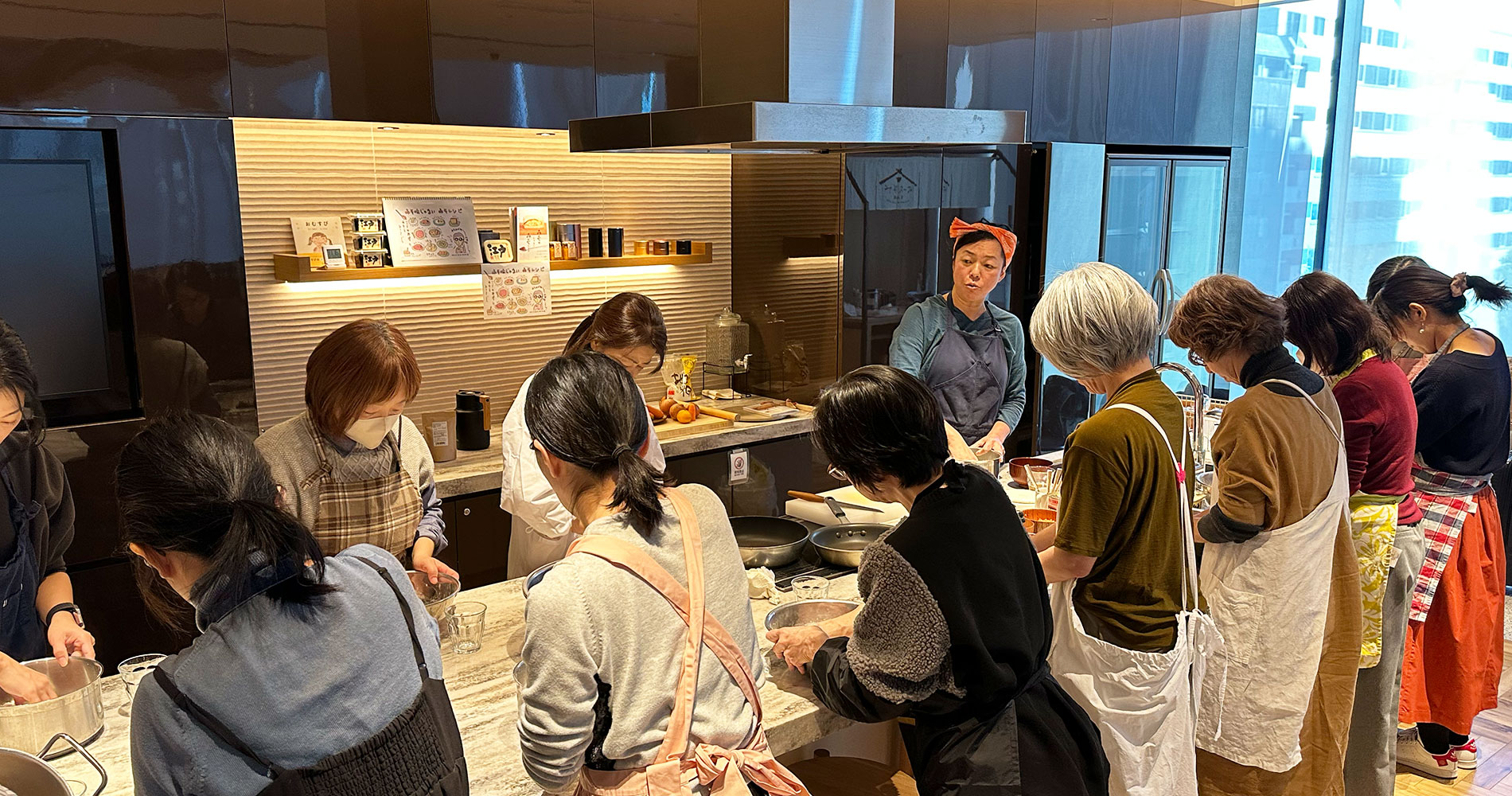
皆さんですいとんをこねていきます。
Everyone kneading the suiton flour dumplings.
次に、すいとん生地を寝かせている間に、minokamoさんの味噌を使ったボロネーゼソース作りのデモンストレーション。フライパンに油を入れ、玉ねぎ、人参、ひき肉を入れて炒めます。炒まったら、味噌、醤油、砂糖、お好みでカレー粉を少し入れ、最後にトマト缶を入れてしばらく煮たら、ソースの出来上がり。思ったよりも簡単で手早くソースが出来ました。
Next, while the suiton flour dumpling dough was resting, Ms. minokamo demonstrated how to make the Bolognese sauce using miso. Add oil to a frying pan, add onions, carrots and minced meat, and then fry. Once fried, add miso, soy sauce, sugar and a little curry powder if you desire. Finally, add a can of tomatoes and then simmer for a while to make the sauce. It was easier and quicker to make the sauce than we thought.
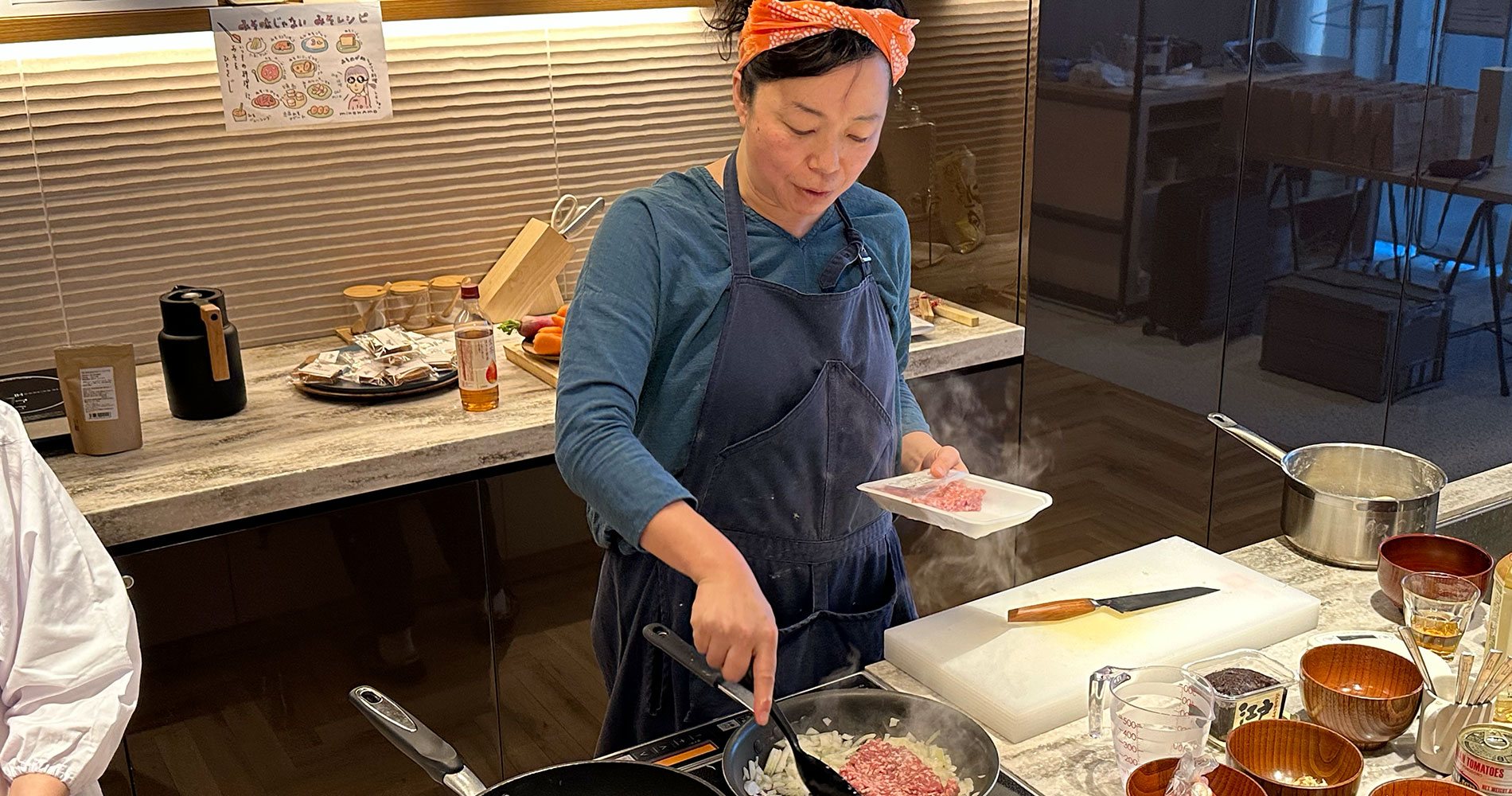
軽快なminokamoさんのトークに参加者からも笑い声が上がります。
The participants laughed at the light-hearted talk of Ms. minokamo.
すいとん生地を15分ほど寝かせたら、沸騰したお湯に、手でちぎって入れて茹でていきます。丸くしたり、長めにうどん風にしたり、好きな形で作ってOKなのでお子さんと一緒にやっても面白いかもしれません。
After letting the suiton flour dumpling dough rest for about 15 minutes, tear into pieces by hand and then add to boiling water to boil it. You can make it into your favorite shape such as rolling it into a ball or making it look like longish udon noodles. Therefore, you might have fun doing this together with your children.
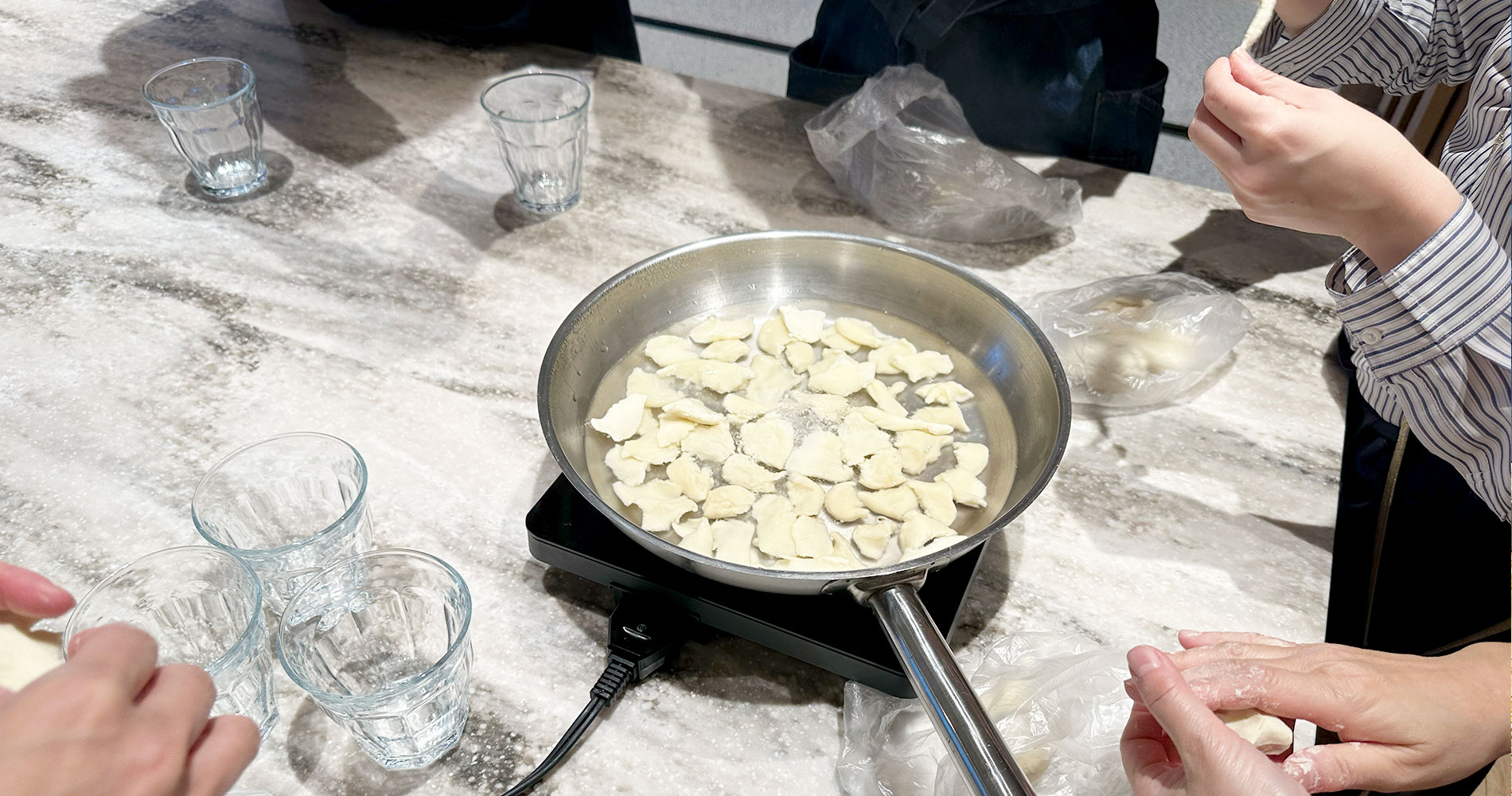
大きさや形に個性が出ます。
There is a personality to each size and shape.
すいとんが茹で上がったら先ほど作ったソースと混ぜて、出来上がり!
Once the suiton flour dumplings have boiled, mix in the sauce you just made to finish.
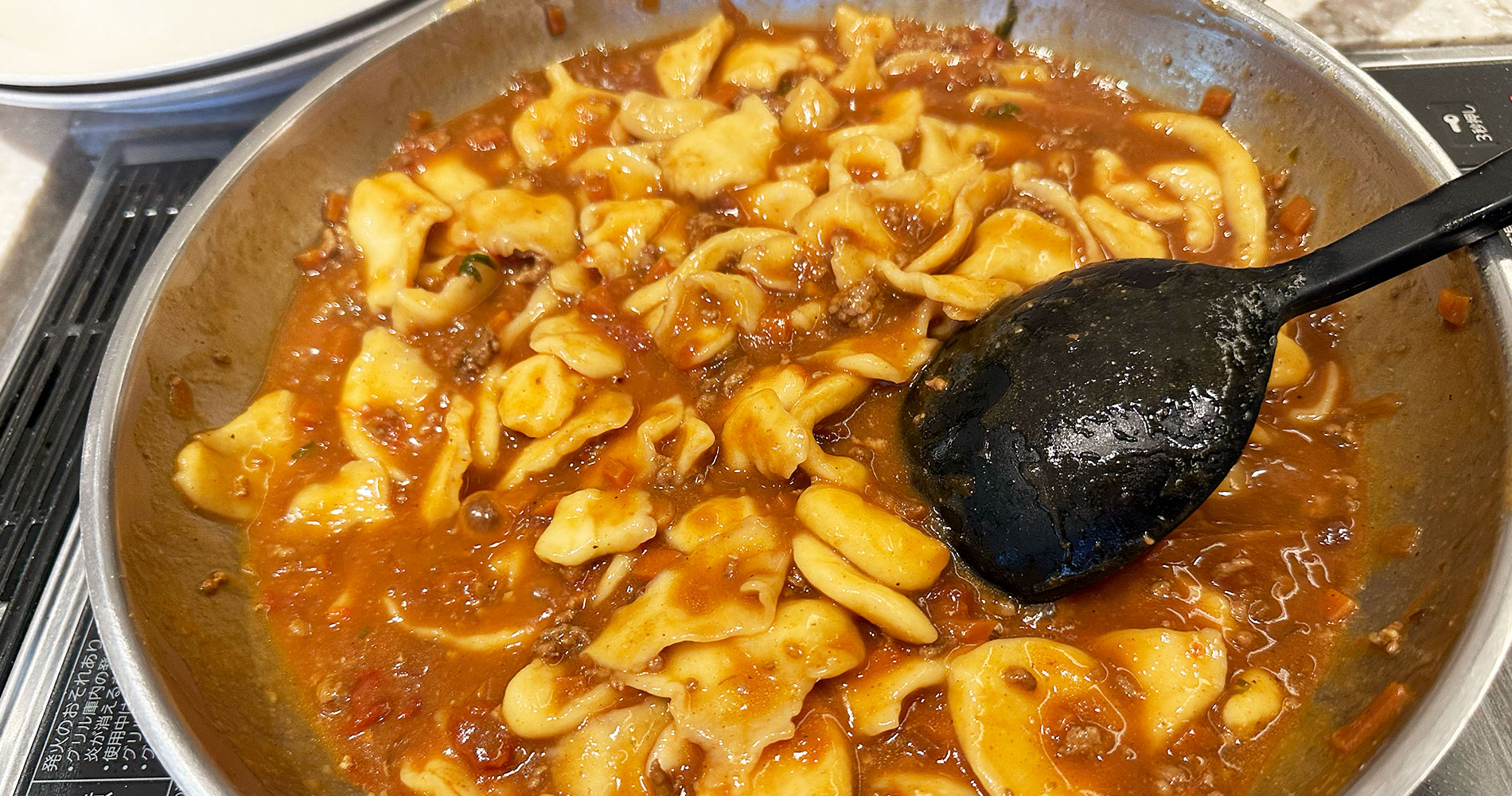
おいしそうな匂いが会場に広がります。
A delicious aroma filled the venue.
そして、いよいよお待ちかねのランチがスタート。参加者同士でお話ししたり、自己紹介したり、味噌についてminokamoさんの話を聞いたり、楽しい時間を過ごしました。
The long-awaited lunch then finally began. The participants enjoyed a fun time talking among themselves, introducing themselves and listening to Ms. minokamo talking about miso.
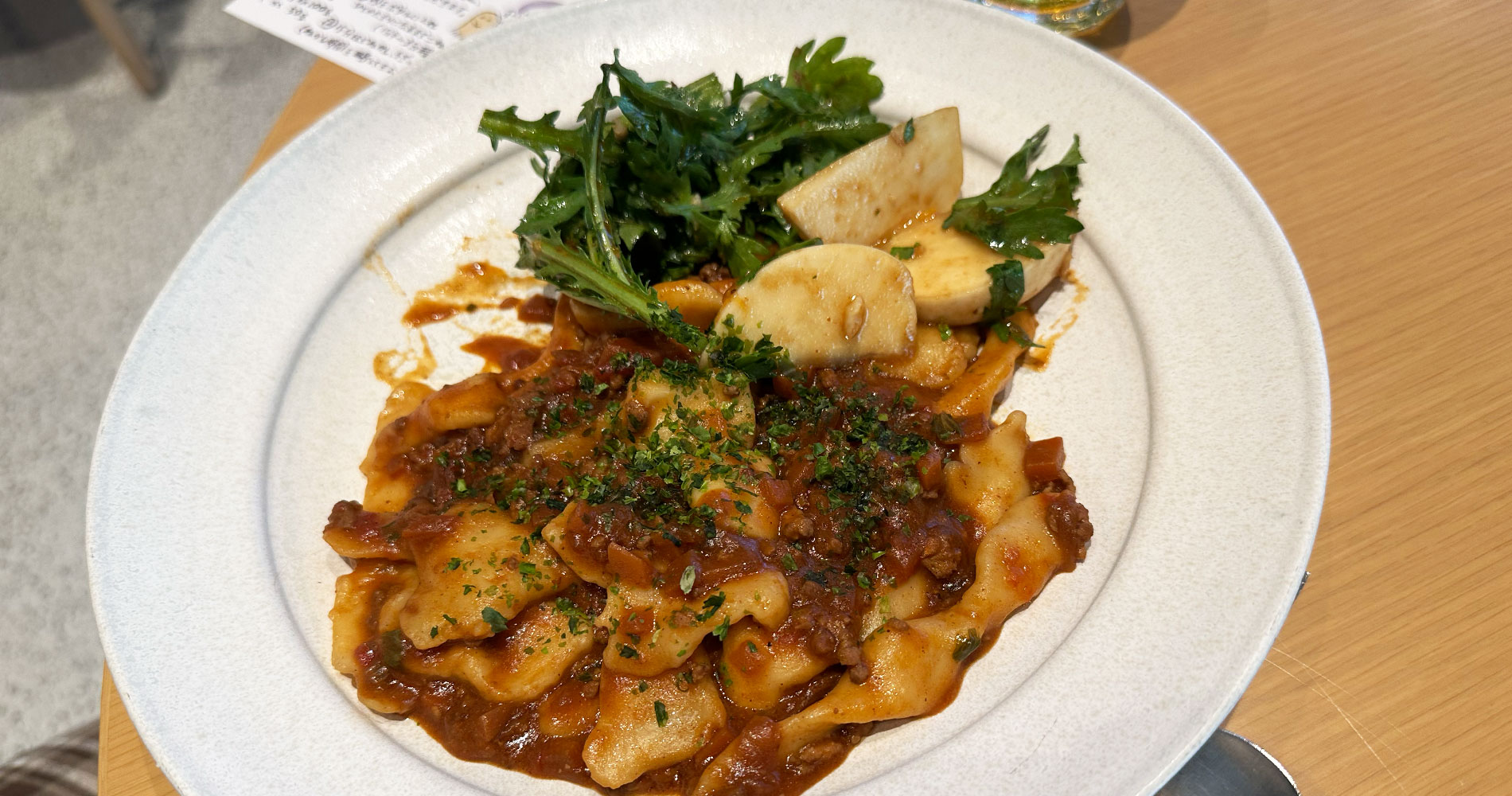
仕上げにパセリがわりのアオサをかけてもよし。
You can also sprinkle sea lettuce in place of parsley on top of the dish to finish it.
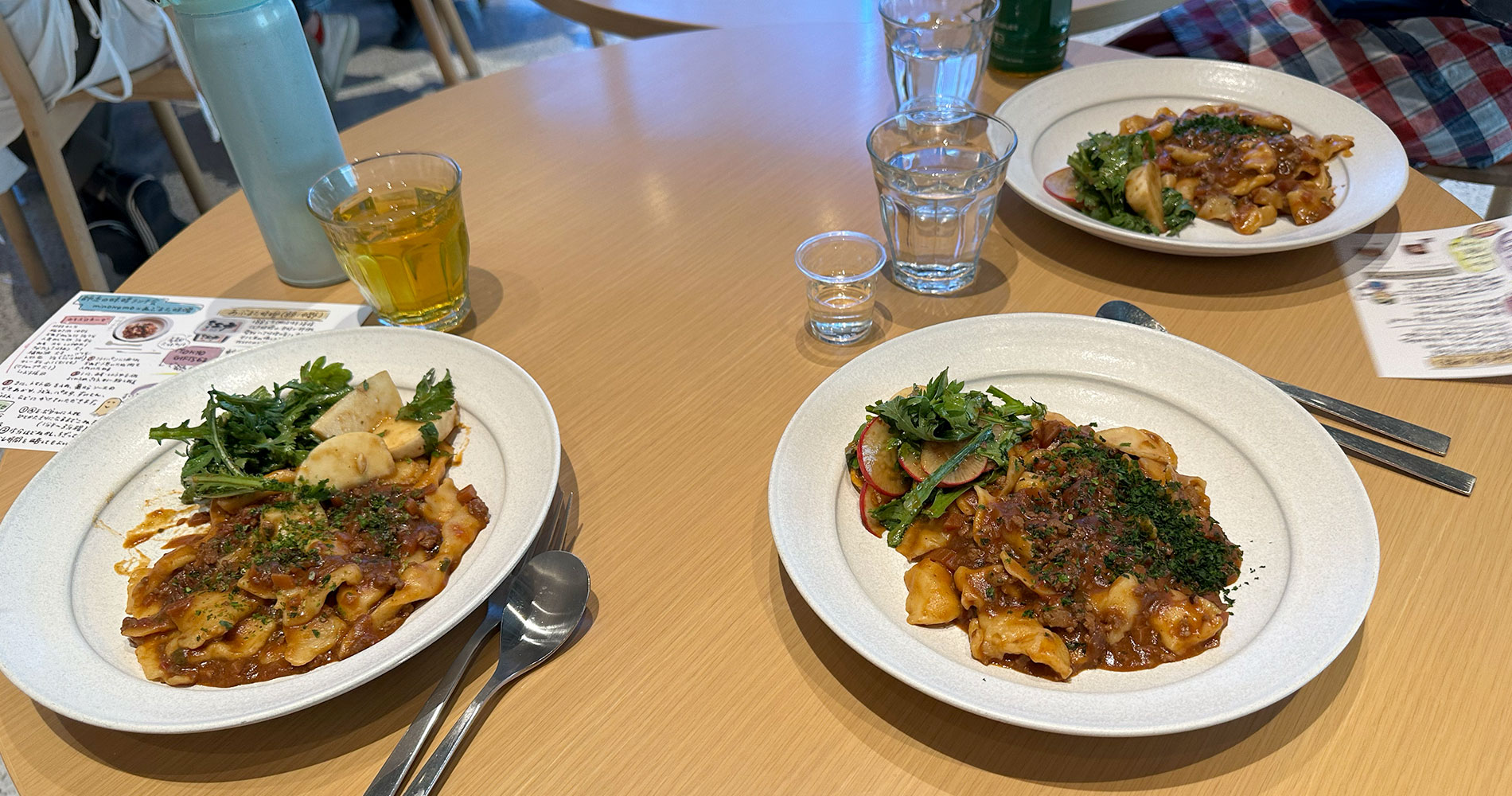
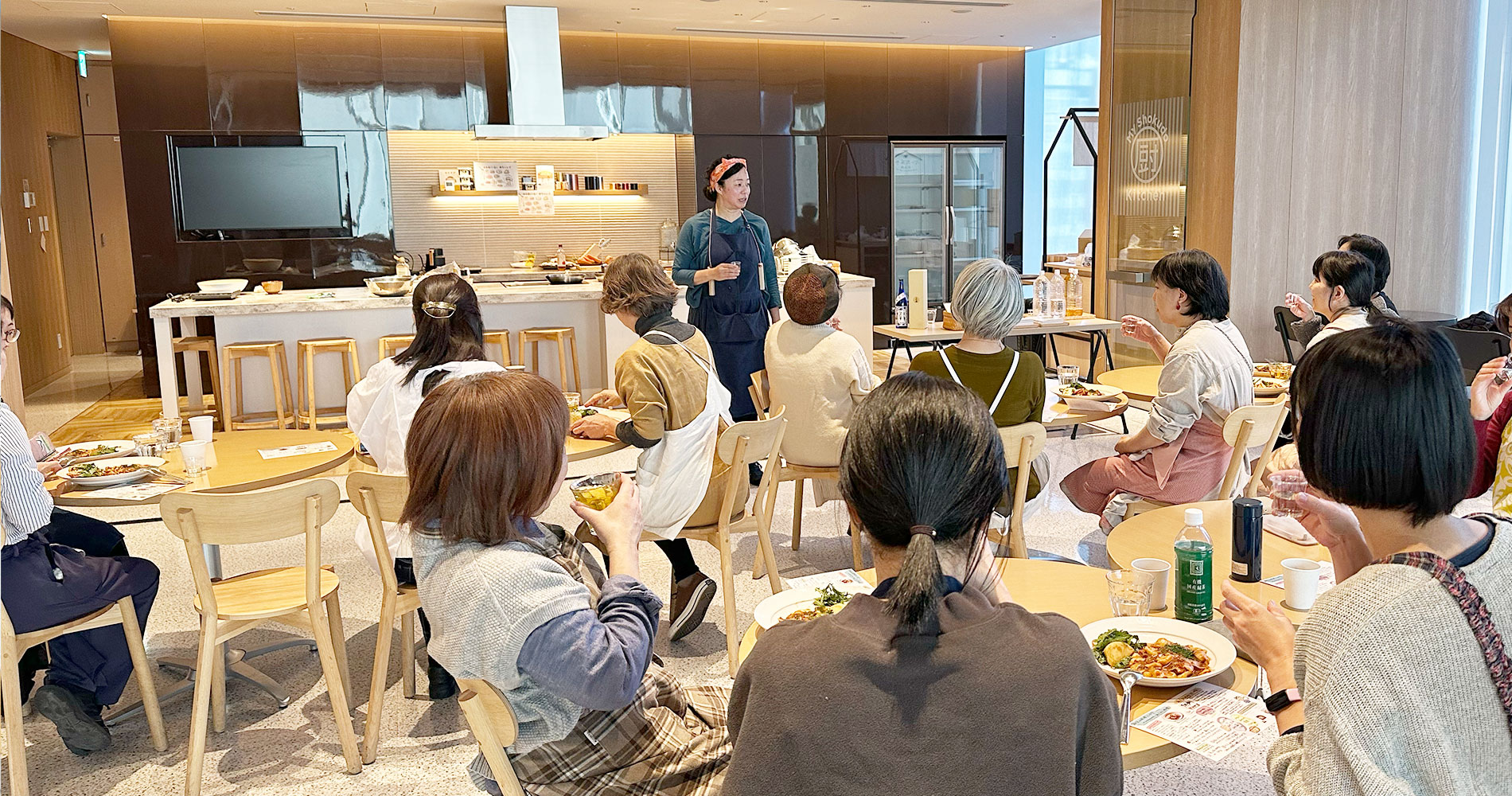
初めて会う参加者同士も楽しくおしゃべり。
The participants happily chatted away even though they were meeting each other for the first time.
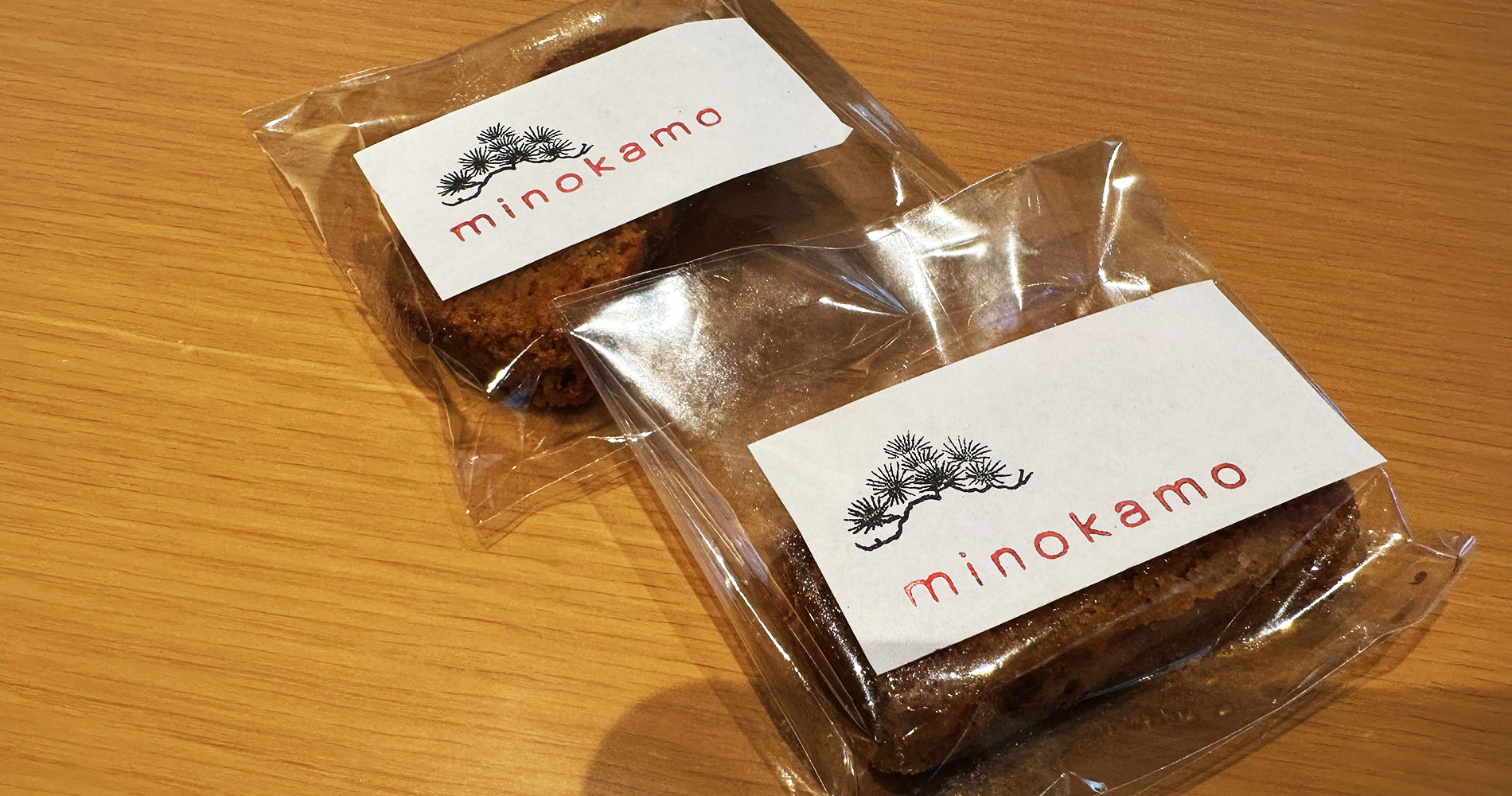
minokamoさんからクリスマスプレゼント。絶品の味噌パウンドケーキ!
A Christmas present from Ms. minokamo. A perfect miso pound cake!
最後に、参加者には料理に使った味噌をお土産としてお渡しし、イベントは無事終了。
参加者からは、「和食のイメージが強かったが、洋風にも意外と合うのがびっくりでした。」といった新たな発見や、「みなさんと一緒に楽しく料理のコツを学べた。」「またこういうイベントがあれば参加したい!」という意見をいただきました。
今回イベントで使用した「江戸甘合わせ味噌」はTOKYO GIFTS 62の店舗でも販売中ですので、ぜひご来店ください。
Finally, the participants were given the miso they used in the cooking as a souvenir and the event ended successfully.
The participants made new discoveries: “I had a strong image of miso as a Japanese food, but I was surprised at how well it also went with Western food.” They also expressed opinions like the following: “I had a lot of fun learning tips to cooking together with everyone.” I want to take part again if there is an event like this.”
The Edo low-salt blended miso used in this event is also available to purchase at the TOKYO GIFTS 62 store. Please come and check it out.
(後日談:早速夜ご飯で、お土産の味噌を使って味噌ハヤシライスを作ってみた、という参加者の方も!)
(Later development: One of the participants immediately tried making miso hashed meat with rice using the souvenir miso for dinner!)
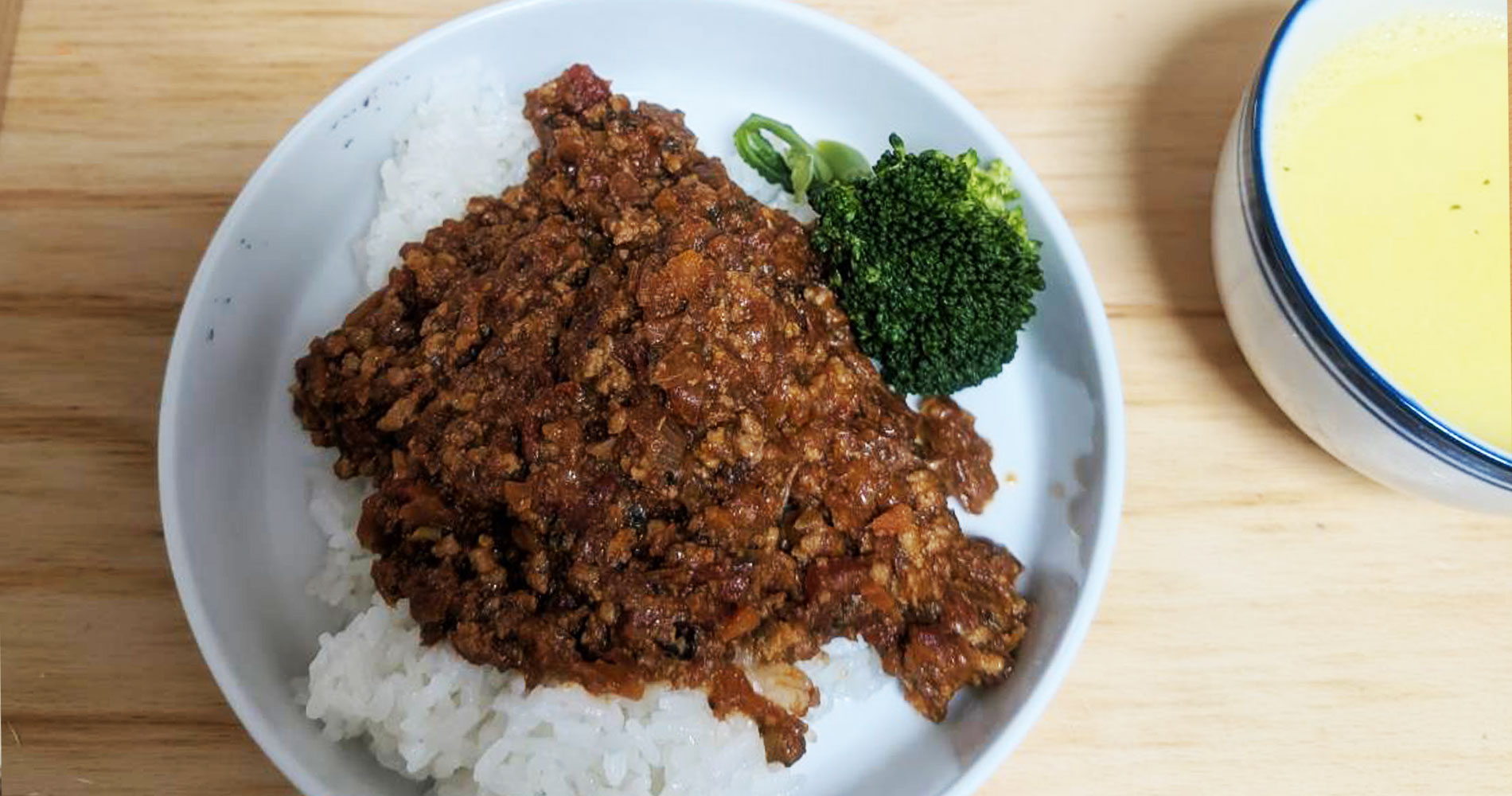
《 味噌ボロネーゼレシピ (4人分)》
・豚ひき肉:100g
・玉ねぎみじん切り:1/2個分
・人参みじん切り:1/2本分
・味噌:大さじ4
・醤油:大さじ1
・きび砂糖or はちみつ:大さじ1
・トマト缶:1/2(トマトジュース 200ccでもOK)
・カレー粉(なくてもOK)::小さじ1
Miso Bolognese Recipe (For 4)
・Minced pork meat: 100 g
・ Finely chopped onion: 1/2
・ Finely chopped carrot: 1/2
・ Miso: 4 tbsp
・ Soy sauce: 1 tbsp
・ Light brown sugar or honey: 1 tbsp
・ Canned tomato: 1/2 (or 200 cc or tomato juice)
・Curry powder (optional) 1 tsp
《 株式会社あぶまた味噌 》
Abumata Miso Co., Ltd.
1885年(明治18年)に創業し、六代に渡り「江戸甘味噌」の伝統を守り続ける老舗。 「江戸甘味噌」は、江戸庶民に愛され続けた、甘味が特徴の味噌。江戸時代の将軍徳川家康が愛知・三河の八丁味噌の旨さと京都の白味噌の甘さを兼ね備えた味噌を作らせたのが始まりと言われています。 「江戸甘合わせ味噌」は、みそ汁として飲みやすいように、江戸甘味噌と赤味噌を合わせた味噌。厳選された米・大豆・食塩を原料に、人口甘味料を使用せず、米麹をたっぷり使用しており、塩分も控えめ。
Founded in 1885, Abumata Miso is a long-established store which has continued to protect the traditions of Edo low-salt miso over six generations. Edo low-salt miso is characterized by its sweetness. It has continued to be loved by the ordinary people of Edo. It is said that it originated with Shogun Tokugawa Ieyasu who had made a miso combining the umami of hatcho miso from Mikawa in Aichi with the sweetness of white miso from Kyoto in the Edo period (1603 to 1868). Edo low-salt blended miso is made by combining Edo low-salt miso with dark-brown miso so that it goes down easily as miso soup. It is made from carefully selected rice, soybeans and table salt. No artificial sweeteners are used. Plenty of malted rice is used. It is also low in salt.
《 minokamo(みのかも)》
料理家・写真家「長尾明子(ながおあきこ)」
現在の拠点は東京と祖母が暮らした岐阜の築100年以上の家。日本の地域食の調査・提案をライフワークとし、自治体などとの協働で特産品を生かした料理を数多く考案。フードスタイリング、雑誌等へのレシピや器づかいの提案、食を通じた世代間交流のイベントも開催。写真家としての活動のほか、書籍・記事の執筆、イラストも手がける。 近著は「みそ味じゃない みそレシピ」(池田書店)『粉100、水50でつくるすいとん』(技術評論社)『料理旅から、ただいま』(風土社)
→minokamo Instagram
Ms. minokamo
Akiko Nagao, Chef and Photographer
Ms. minokamo is currently based in Tokyo and a house built over a 100 years ago in Gifu where her grandmother lived. Researching and proposing regional foods of Japan is her lifework. She has devised numerous foods that take advantage of local specialties in collaboration with local governments and others. She also engages in food styling, proposing recipes and tableware for magazines and other publications, and holding events for intergenerational exchanges through food. In addition to her work as a photographer, she is also involved in writing and illustrating books and articles. Her recent publications include “Miso Aji Janai: Miso Recipes” (Ikeda Publishing), “Kona 100, Mizu 50 de Tsukuru Suiton” (Gijutsu-Hyoron) and “Ryoritabi kara, Tadaima” (Fudosha).
→minokamo Instagram







